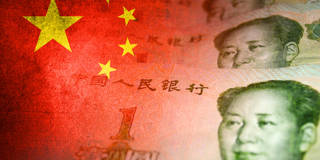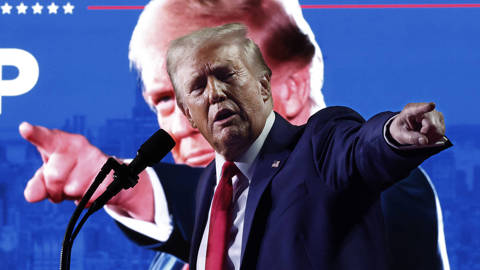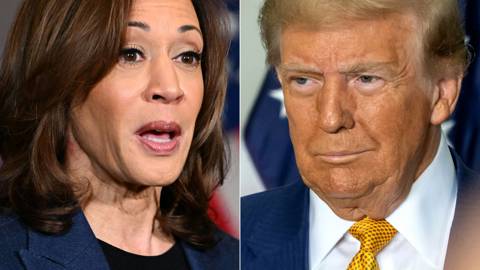Keyu Jin
Says More…
This week in Say More, PS talks with Keyu Jin, Professor of Economics at the London School of Economics and Political Science, and the author of The New China Playbook: Beyond Socialism and Capitalism.
Project Syndicate: In January 2021, you praised China’s pandemic-recovery strategy, but highlighted enduring risks, including a “structural deterioration, following years of economic reorientation away from exports and investment and toward consumption” and “looming” financial risks. More than two years later, China’s strict zero-COVID policy is no more, but the global economy has suffered major shocks, not least from the war in Ukraine. Which risks has China made progress in mitigating in this changed environment, and which have intensified?
Keyu Jin: The Chinese economy is currently suffering from a deficit in demand, largely due to a loss of confidence by the private sector. In 2009, “Team China” saved a plunging economy, with state banks ensuring that state-owned enterprises (SOEs) were flush with the credit they needed to undertake large infrastructure programs and projects. But, today, such quick fixes no longer work as effectively.
The private sector is now firmly in the driver’s seat and needs to do all the heavy lifting. How to manage expectations and sustain confidence will be a big challenge for the state. More broadly, China – like other major economies – has added “de-risking” to its agenda. From technology and critical components to energy and resources, China is trying to diversify, build resilience, and strengthen its self-reliance.
PS: In December 2021, you argued that China’s regulatory crackdown on tech companies was both misunderstood and overblown in international media. Far from attempting to “cut billionaires down to size,” China’s authorities were seeking to address the “social tensions and vulnerabilities that come with unchecked market-driven growth.” China has effectively concluded its regulatory crackdown, and now wants to nurture tech companies. How has the tech landscape in China changed? Have the authorities achieved their goals, or merely changed tack?
KJ: Yes, local governments across China have lately been working to bolster private innovators. Even second-tier cities like Chengdu, Guangzhou, Hefei, Suzhou, and Wuhan have nurtured global companies working in areas like quantum computing, artificial intelligence, electric and autonomous vehicles. As I explain in my new book, The New China Playbook: Beyond Socialism and Capitalism, this “decentralized” approach to boosting innovation is what enabled China to achieve economic reform and growth. China’s “unicorns” are geographically diffuse, not concentrated only in cities like Beijing and Shenzhen.
But while the creation of a more supportive environment is a start, a credible long-term government commitment to this approach is essential to restore private-sector confidence. This will take time.
Admittedly, while a recent surge in domestic demand is driving huge amounts of capital to technologies like semiconductors, others – such as fintech or platform businesses – may never recapture their former glory. There will inevitably be waste and inefficiencies. Nonetheless, I am cautiously optimistic that China’s all-encompassing domestic innovation system, and the close proximity between downstream players (the huge number of AI, EV and autonomous-vehicle companies) and upstream chip designers and manufacturers, will give China a meaningful shot at leading in cutting-edge technologies.
PS: In February 2022, you pointed out that the American “campaign to limit Chinese firms’ access to critical technologies” had “backfired,” by motivating China to become technologically self-reliant. The New China Playbook attempts to correct the Western misconceptions about China that mislead forecasters and result in misguided policies. For example, the West still perceives SOEs as dominant, even though private firms now account for more output, wealth, and urban employment. How should this affect the West’s approach to Chinese business?
KJ: It is important to separate hype from reality, distinguish the macro and the micro, and understand what is happening on the ground. The common perception outside China is that the country has a centralized system, in which a dominant state steers – even controls – the economy. In reality, the Chinese system features a highly nuanced relationship between the private sector and local governments. This is the key to understanding how things work in China.

Secure your copy of PS Quarterly: The Year Ahead 2025
Our annual flagship magazine, PS Quarterly: The Year Ahead 2025, has arrived. To gain digital access to all of the magazine’s content, and receive your print copy, subscribe to PS Digital Plus now.
Local-government officials have an incentive to pursue the policy priority that the central government has set – previously growth, now innovation. But there are many possible ways to support entrepreneurs. Beyond providing capital, local governments can help coordinate supply chains, attract talent, offer cheap land, and create an industrial cluster than can realize agglomeration effects. With the amount of money available to support private companies declining, the latter interventions have become even more important. And they are being pursued all over China.
This is neither state capitalism, as it is typically understood, nor is it socialism or a market economy. Until we stop judging the country through a cultural lens and gain a better understanding of China’s unique system on its own terms – including the deeply embedded mechanisms of competition and accountability – we will get China wrong more than we get it right.
For every action, there is also a reaction. And the quixotic nature of the Chinese economy is often about the unexpected reactions.
BY THE WAY . . .
PS: As you note in The New China Playbook, China has become embroiled in trade disputes with the advanced economies, especially over subsidies, restrictions on foreign investment, and demands for technology transfer. But “outside pressure on China to change some of its [trading] practices maybe a blessing in disguise.” What measures would help China “ensure continued engagement with the global trading system” and benefit its economy?
KJ: China changed thousands of laws, and pursued SOE reform, so that it could join the World Trade Organization in 2001. This is an example of pressure leading to positive change. Another is the Chinese government’s more recent strengthening of intellectual-property protection – a change that is good not only for foreign companies, but also for Chinese firms, among which competition is arguably the most intense. Today, China remains one of the most connected hubs in global value chains, and its exports have continued to rise this year, having dipped only during the pandemic.
Chinese companies’ demands for technology transfers were not all that successful. China still cannot compete in manufacturing internal-combustion cars– the sector where technology transfers were most apparent. Instead, it is a global leader in EVs. In fact, China’s most successful technologies are greenfield technologies, like renewables and fintech, rather than those where Western companies have a latent advantage.
As China’s economy matures, so will its rules, norms, and institutions, simply because reality will demand it. A standard model of industrialization may no longer be as effective for innovation, which places significant demands on civil society and institutions. Industrial policies, technology transfers, and subsidies (which the United States is now also pursuing) were more important for the old playbook. The new playbook aims to overcome new challenges and achieve new goals. But the combination of political centralization and economic decentralization will remain. And despite its flaws, it continues to be a powerful means of achieving the country’s economic and technological objectives.
PS: You describe China’s push to establish itself as a global financial anchor with a world-leading currency. So far, however, the country has not been able to use its “status as a trader and major creditor” to turn the renminbi into an international currency that can rival the US dollar, owing primarily to the authorities’ reluctance to remove capital controls, which is essential to develop China’s immature financial markets but also implies greater instability. How close is China to taking the leap?
KJ: The tension Chinese policymakers face between the imperative of ceding more control and preserving stability is most saliently reflected in the financial system. I do not see any signs that China is moving toward greater capital-account liberalization. On the contrary, growing economic and geopolitical uncertainty may prompt China to tighten its capital accounts. While geopolitical developments could make the renminbi more popular, especially at a time when the world is increasingly multipolar, China’s ability to establish the renminbi as a global financial anchor comes down to the depth, size, and breadth of its financial system.
PS: Early in your book, you explain that younger generations in China – and especially today’s younger adults – seem different in “virtually every respect” from previous generations. What are some of their distinguishing characteristics, and what do they mean for China’s internal economic development and international relations?
KJ: The previous generation loved to save, and the new generation loves to borrow and spend. People under 35 years of age account for some 80% of consumer credit in China. This generation engages in a lifestyle of consumption that is wholly unfamiliar to the previous generations. As many surveys show, they are also more open-minded, especially toward issues concerning diversity, and more socially conscious.
This generation has the potential to be a positive force for the Chinese economy and serve as a bridge to the rest of the world, as their values align more closely with those of younger people in other countries. Their more laid-back, slightly less ambitious attitudes – for them, life is not all about “survival of the fittest” – would be good for China’s image. Unfortunately, as I point out in a recent commentary, this generation is now facing unprecedented challenges at home.




